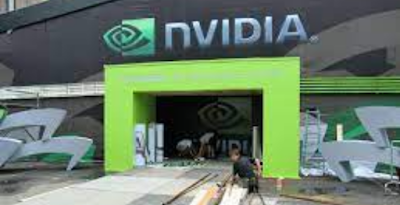In the ever-evolving world of gaming, technology plays a crucial role in pushing the boundaries of what is possible. Nvidia, a leading technology company renowned for its graphics processing units (GPUs), has taken a giant leap forward by harnessing the power of artificial intelligence (AI) to make games more lifelike than ever before.
Through their innovative AI technologies, Nvidia is revolutionizing the gaming industry and delivering immersive experiences that blur the line between the virtual and the real. In this article, we explore how Nvidia is using AI to make games truly come alive.
Enhancing Visual Realism:
One of the primary areas where Nvidia's AI shines is in enhancing visual realism. With techniques such as deep learning and neural networks, Nvidia's AI algorithms can analyze vast amounts of data to understand the intricate details of real-world objects, textures, and lighting conditions. By applying this knowledge, AI can recreate these elements in virtual environments with remarkable accuracy, resulting in breathtaking graphics that bring games to life. From lifelike landscapes to realistic character models, Nvidia's AI-powered graphics algorithms elevate the visual fidelity of games to new heights.
Real-time Ray Tracing:
Another groundbreaking technology introduced by Nvidia is real-time ray tracing. Traditionally, ray tracing has been a computationally intensive process reserved for pre-rendered content in movies and animations. However, Nvidia's AI-driven approach allows for real-time ray tracing in games, enabling dynamic lighting, accurate reflections, and realistic shadows. This adds a new level of authenticity to game environments, making them feel more immersive and convincing. With real-time ray tracing, Nvidia is pushing the boundaries of visual realism in gaming and providing developers with powerful tools to create stunning, lifelike worlds.
AI-Driven Animation:
Nvidia's AI technologies also extend to animation, an integral part of creating lifelike characters and believable movements in games. By leveraging deep learning algorithms, Nvidia's AI can analyze and synthesize motion data from various sources, such as motion capture and real-world videos. This allows for the creation of more natural and fluid animations that react dynamically to the game's environment and player interactions. Characters become more responsive, with lifelike expressions, gestures, and realistic physics simulations, further immersing players in the game world.
Improving AI-controlled Characters:
In addition to enhancing the visual aspects, Nvidia's AI is also making significant strides in improving the behavior and intelligence of AI-controlled characters within games. Through machine learning algorithms, Nvidia's AI can analyze gameplay patterns and adapt its responses to player actions, creating more challenging and realistic opponents. This adds depth to gameplay and enhances the overall gaming experience by providing engaging and unpredictable interactions.
Collaboration and Future Possibilities:
Nvidia recognizes the importance of collaboration with game developers to implement AI technologies effectively. Through partnerships and developer tools like Nvidia DLSS (Deep Learning Super Sampling), Nvidia empowers game studios to leverage AI to its fullest potential. The future possibilities are exciting, as AI continues to evolve and provide even more realistic and immersive gaming experiences. From improved physics simulations to enhanced audio and personalized gameplay experiences, Nvidia's AI-driven innovations are poised to reshape the gaming landscape.
Related Post:
Google Pixel 7a vs Pixel 6a: Should You Upgrade?
How Can I Become a Pro at Navigating with Google Maps Go?
How Does Google Drive Mobile App Revolutionize File Access and Management?
What is Google Pixel Fold: Finally, a Foldable That Looks Just Like a Smartphone
Conclusion:
Nvidia's use of AI to make games more lifelike is a testament to the power of technology and innovation. By leveraging AI algorithms, Nvidia is pushing the boundaries of visual realism, animation, and AI-controlled character behavior in gaming. With advancements like real-time ray tracing, AI-driven animation, and improved gameplay experiences, Nvidia is transforming the way we interact with virtual worlds.
As Nvidia continues to refine and expand its AI technologies, we can anticipate even more breathtaking and lifelike gaming experiences in the future.
FAQ
What is Nvidia known for?
A1: Nvidia is known for its graphics processing units (GPUs) and advanced technology in the field of visual computing.
How is Nvidia using AI in its products and services?
Nvidia incorporates AI in its products and services to enhance gaming experiences, improve graphics rendering, and optimize performance.
Can you name some popular Nvidia GPUs?
Popular Nvidia GPUs include the GeForce RTX series, the Quadro series for professional applications, and the Tesla series for high-performance computing.
How does Nvidia's technology impact the gaming industry?
Nvidia's technology has a significant impact on the gaming industry by delivering high-quality graphics, realistic effects, and improved performance.
What is the significance of Nvidia's real-time ray tracing technology?
Nvidia's real-time ray tracing technology allows for more accurate lighting, reflections, and shadows in games, resulting in enhanced realism and visual quality.
How does Nvidia contribute to AI development?
Nvidia provides hardware and software solutions, such as GPUs and AI frameworks like CUDA and TensorRT, that accelerate AI training and inference processes.
How does Nvidia collaborate with game developers?
Nvidia collaborates with game developers by providing tools, resources, and support to optimize games for their GPUs, enabling better performance and visual effects.
What role does Nvidia play in the field of autonomous vehicles?
Nvidia develops hardware and software solutions for autonomous vehicles, including advanced AI platforms for perception, mapping, and self-driving capabilities.
How does Nvidia contribute to data center computing?
Nvidia's data center GPUs, such as the Tesla series, offer high-performance computing capabilities, enabling tasks like AI training, data analysis, and scientific simulations.
What are some applications of Nvidia's AI technology beyond gaming?
Nvidia's AI technology finds applications in various fields, including healthcare, robotics, finance, virtual reality, and image processing.







